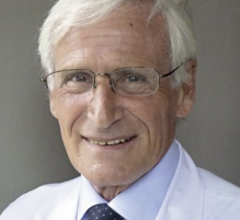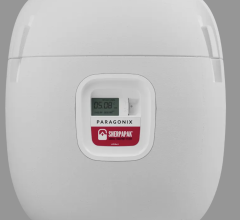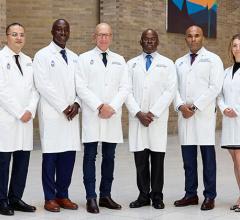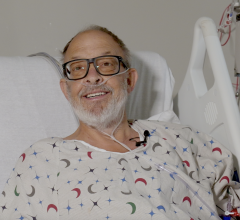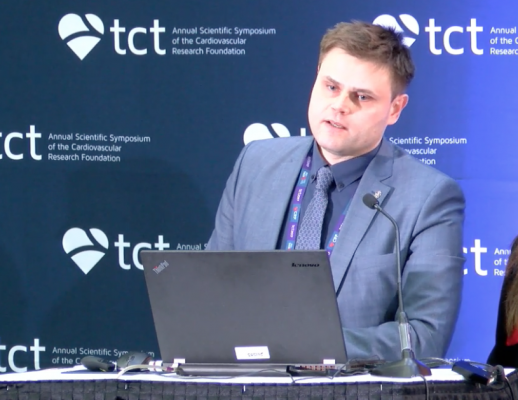
Study principal investigator Vladimir Ganyukov, M.D., Ph.D., head of interventional cardiology, State Scientific Institute for Complex Issues of Cardiovascular Diseases, Kemerovo, Russia, explaining the HREVS trial results at TCT 2017.
November 6, 2017 — In the Hybrid REvascularization Versus Standards (HREVS) study that evaluated three different revascularization strategies, there was no major difference between the use of coronary artery bypass grafts (CABG), drug-eluting stent percutaneous coronary interventions (DES-PCI) or hybrid coronary revascularization (HCR) using a LIMA-LAD graft plus DES-PCI for the remaining vessels. The data from the trial was presented at the 2017 Transcatheter Cardiovascular Therapeutics (TCT) annual meeting.
Today, revascularization in multivessel coronary artery disease (MV-CAD) is achieved mainly through CABG or DES-PCI. A less-evidenced approach is the hybrid coronary revascularization (HCR). The aim of the study was to compare in a randomized trial the current guideline accepted revascularization strategy for multi-vessel coronary artery disease versus a hybrid revascularization strategy. The single center study included 154 patients who agreed to be randomized to one of the three revascularization methods (CABG, DES-PCI or HCR). The study was powered for a primary endpoint of residual myocardial ischemia at 12 months.
At 30 days, there were no significant differences. There was 9.6 percent (n=5) conversion to CABG in the hybrid group and higher rate of bleeding with surgery, which was expected, said study principal investigator Vladimir Ganyukov, M.D., Ph.D., head of interventional cardiology, State Scientific Institute for Complex Issues of Cardiovascular Diseases, Kemerovo, Russia.
He said PCI was associated with the shortest hospital stay and sick-leave duration.
Major adverse events within 30 days were similar in terms of MACCE and its components. In the HCR group there were five patients (9.8 percent) who required conversion to conventional on-pump CABG with a median sternotomy either for surgical technical reasons (n=2) or due to hemodynamic instability following LIMA-LAD grafting in the absence of other lesion(s) revascularization (n=3). The HCR group was associated with a lower bleeding (for BARC 3-4) than CABG.
At 12 months, there were no statistically significant difference s in residual ischemia. The primary study end-point of non-inferiority was met.
Target vessel of graft failure were similar across the study arms. The secondary endpoint and events at one year were comparable in the three groups. The major adverse coronary and cerebral event (MACCE) rate at 12 months was 12 percent for CABG, versus 13.4 for HCR, and 13.2 percent (p=0.83). Target vessel or graft failure rate at 12 months was 12 percent for CABG, 11.5 HCR and 11.3 for PCI (p>0.05).
There was MACCE-free survival at 12 months was nearly identical for all three arms.
Related Content
TCT 2017 Late-breaking Clinical Trial Presentations

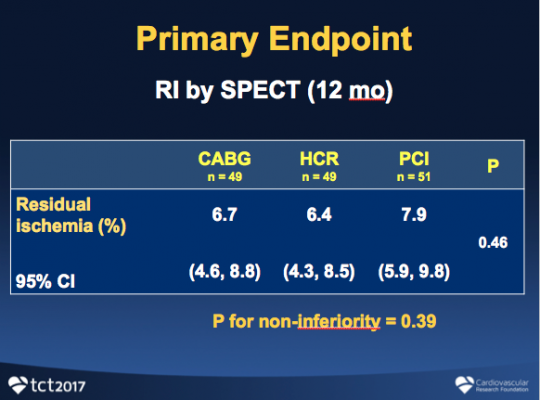
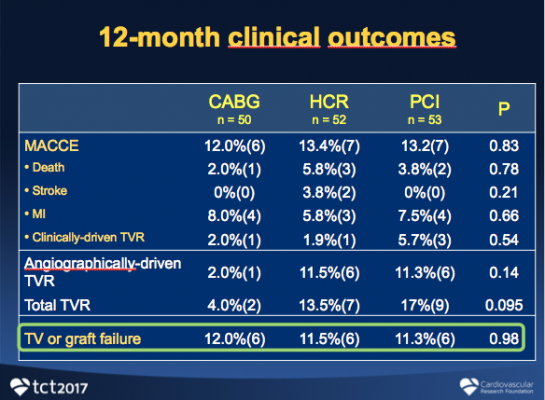
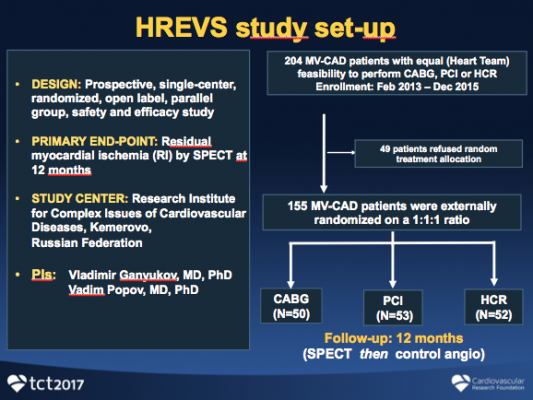

 March 20, 2024
March 20, 2024 

